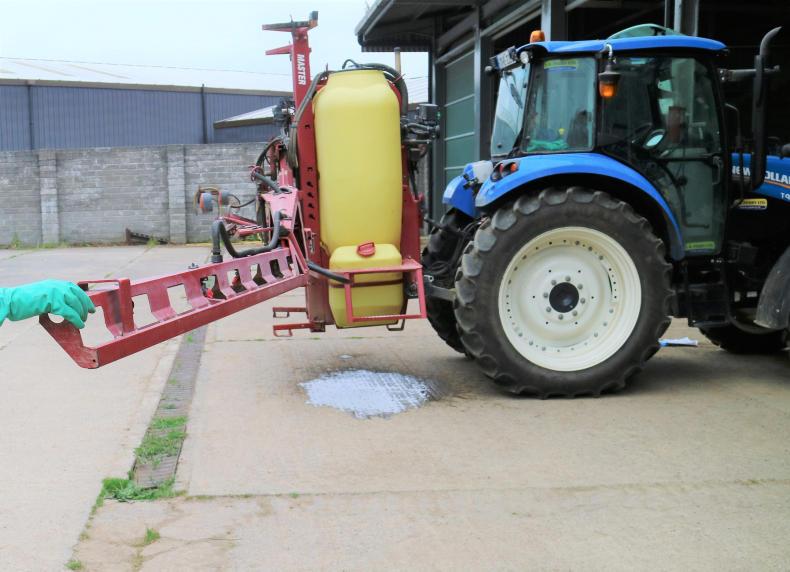Since 26 November 2016, all sprayers that were more than five years old and having a boom width of >3m should have passed a pesticide application equipment test.
If this test was not carried out, the sprayer cannot be used to apply sprays to grassland and arable crops until it passes a test.
According to the Department, the interval between tests must not exceed five years up to 2020, after which the interval must not exceed three years.
Sprayers can only be tested by approved pesticide equipment inspectors. There are a list of approved inspectors on the Sustainable Use of Pesticides Directive website.
A test costs in the region of €150 to €200. It usually takes a minimum of two hours to complete. All going well, it can be passed on the spot.
What’s involved?
Farmers organise for the tester to visit the farm to carry out the test. Most sprayers in good condition will pass and some may just need some minor repairs.
Before the test is carried out, you must ensure that:
The PTO is fully guarded.The tractor and sprayer are connected and ready for testing.The sprayer is completely clean, both inside and out, including filters and filter inserts.The sprayer has an adequate supply of clean water on arrival.There is an appropriate hard standing area to test the sprayer with clean water.They will check that there are no leakages in the pump or the tank.
They will also check the strainer in the tank, filters, the level indicator and the emptying mechanism.
All pipes and hoses will be checked that they have no leakages or abrasions.
The pressure gauge and controls must be working correctly and be readable.
The spray booms must be straight and stable and have the correct nozzle spacing.
All nozzles should be identical and none should be dripping five seconds after the sprayer is turned off.
Pressure and flow rates are also examined.
Read more
Time to reveal Brexit plan B for Irish agriculture
Since 26 November 2016, all sprayers that were more than five years old and having a boom width of >3m should have passed a pesticide application equipment test.
If this test was not carried out, the sprayer cannot be used to apply sprays to grassland and arable crops until it passes a test.
According to the Department, the interval between tests must not exceed five years up to 2020, after which the interval must not exceed three years.
Sprayers can only be tested by approved pesticide equipment inspectors. There are a list of approved inspectors on the Sustainable Use of Pesticides Directive website.
A test costs in the region of €150 to €200. It usually takes a minimum of two hours to complete. All going well, it can be passed on the spot.
What’s involved?
Farmers organise for the tester to visit the farm to carry out the test. Most sprayers in good condition will pass and some may just need some minor repairs.
Before the test is carried out, you must ensure that:
The PTO is fully guarded.The tractor and sprayer are connected and ready for testing.The sprayer is completely clean, both inside and out, including filters and filter inserts.The sprayer has an adequate supply of clean water on arrival.There is an appropriate hard standing area to test the sprayer with clean water.They will check that there are no leakages in the pump or the tank.
They will also check the strainer in the tank, filters, the level indicator and the emptying mechanism.
All pipes and hoses will be checked that they have no leakages or abrasions.
The pressure gauge and controls must be working correctly and be readable.
The spray booms must be straight and stable and have the correct nozzle spacing.
All nozzles should be identical and none should be dripping five seconds after the sprayer is turned off.
Pressure and flow rates are also examined.
Read more
Time to reveal Brexit plan B for Irish agriculture






 This is a subscriber-only article
This is a subscriber-only article










SHARING OPTIONS: